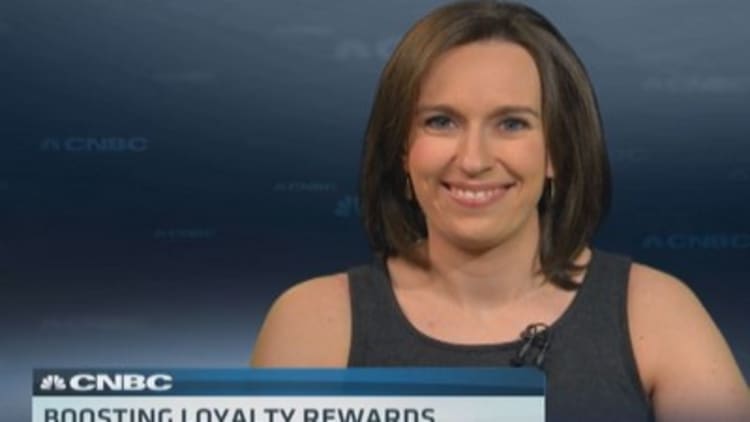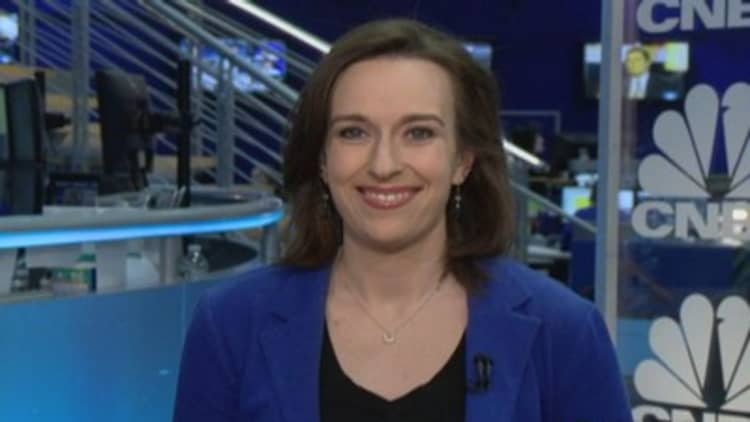
Just how rewarding is your favorite loyalty program?
That question isn't meant to be a head-scratcher, but plenty of consumers honestly don't know—due to complex tiered reward programs that offer different benefits based on how often you visit or how much you spend.
One-third of adults said they aren't sure where they fall in retailers' program tiers, according to a forthcoming study from Colloquy, which surveyed 3,077 adults in the United States and Canada. Another 16 percent said they don't know their membership level in travel programs.
"Although tiers by their very nature are a bit of a scorecard, a lot of programs don't make that information widely available," said Jeff Berry, research director for Colloquy. "Many just don't provide you that ready access to see where you stand, which defeats the purpose."
Confusing language exacerbates the issue, said Kit Yarrow, author of "Decoding the New Consumer Mind."
"Companies have elevated basic status up," Yarrow said. "So you could be a 'gold member' in one program, and still be the lowest status."
Read MoreRetailers lure Pinterest clickers with free design help

Unfortunately for those confused consumers, tiered programs are becoming more common. Macy's introduced a three-tier program earlier this year, while Sephora and Gilt.com did so last year.
Nordstrom, Best Buy, Starbucks, Gap and DSW are among the other retailers with tiered programs. (See chart below for details on how much you'll spend to be among the elite.) Among travel providers, tiers are even more common, with the majority of airlines and hotel chains separating benefits for regular members and several kinds of elites.
"There's a very defined economic benefit for companies," Berry said. "It's often the way in which they create unique benefits for their best customers without having to offer them to every customer, and it entices consumers to spend more."
According to the Colloquy data, 50 percent of consumers said they have changed their behavior to get into a higher reward tier. Whether that's the right move or not depends largely on the program.
"Consumers do need to apply their own level of game theory around what's the level of effort that needs to go in?" Berry said. Going for elite is an easier decision for shoppers already spending enough on say, shoes or clothing, to qualify, and who would simply need to consolidate their spending with one company.
Read MoreMan cave or money pit?
Just watch out for overspending: 19 percent of consumers said they buy more frequently to hit higher reward tiers, and 8 percent said they spend more than normal to do so. Six percent said they are willing to "buy in" by paying a fee for a credit card that earns points in a program or paying some other membership fee.
The price of elite status
| Retailer | Number of tiers | Minimum annual spend for top tier |
| Best Buy | 3 | $3,500 |
| Gap | 2 | $800 |
| Macy's | 3 | $1,000 |
| Nordstrom | 4 | $10,000 |
| Sephora | 3 | $1,000 |
| Starbucks | 3 | 30 purchases |
Source: SOURCE: Retailer program details.
"The person I'm always concerned about is the one who's maybe 20 percent away and thinks, 'Gosh if I just spent this much more, so many wonderful things will come my way,'" said Yarrow, a professor of psychology and marketing at Golden Gate University in San Francisco. "But when you add up the value of those free things, it doesn't equal what you spent."
Blind loyalty can also have a liability of choosing loyalty over a lower price elsewhere, said Jill Cataldo, founder of the Super-Couponing workshops. "You should still always shop around," she said.
On the other hand, there's some value in knowing when to halt the sprint for elite. One-third of consumers told Colloquy they don't feel properly acknowledged for participation in the lowest tier of a loyalty program, even though they are actively participating.
That's a good reason to reassess loyalty altogether, especially if you're not likely to surpass the minimum-spend threshold for a higher tier. Credit and travel experts already recommend, for example, that typical leisure travelers shop airfares by price and pay with a general travel rewards card instead of spending years racking up miles in one airline's program.
Read MoreExtreme strategies to boost airline miles
There may be no reason to pursue the highest tier, either, Berry said. "As you move up in a tier, typically the benefits are more about perceived value than actual measurable value," he said. In other words, more perks like access to special events and better service. Just making it to a middle tier is often the biggest jump in tangible perks like cash rewards or freebies.
Tier-frustration or not, just don't bow out entirely. Even infrequent customers may find that loyalty membership has its perks, said Cataldo. That might be exclusive access to particular sales, or occasional free gifts (such as on your birthday). Plus, the reward points often don't expire, even if you're not racking up enough in a year to get to elite status, she said. Participation may still add up to a gift certificate or free hotel night down the line.
—By CNBC's Kelli B. Grant.


